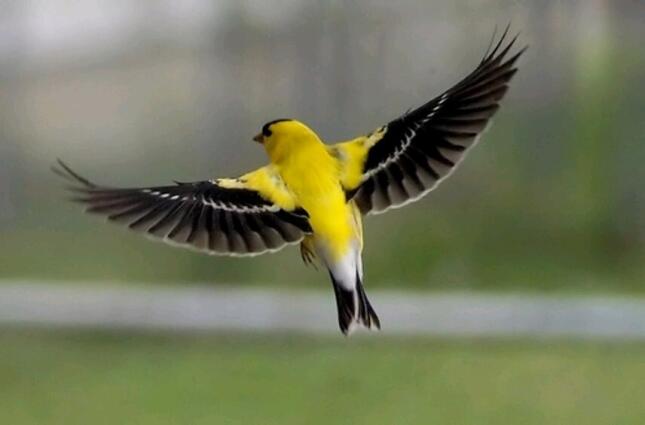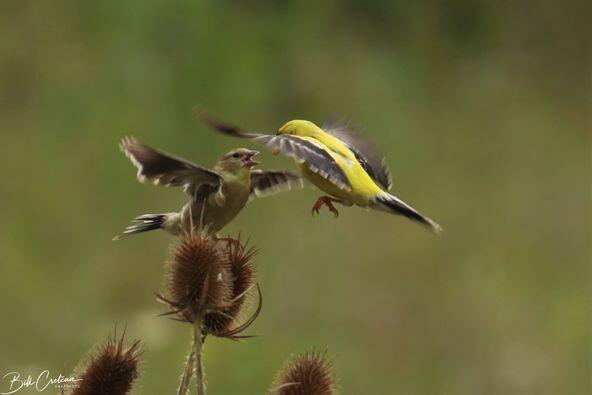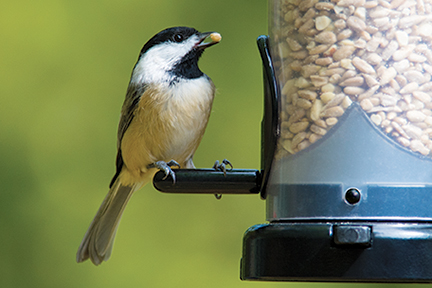Goldfinch Fun Facts
The American Goldfinch remains one of the most beloved birds at our feeders. With their bright yellow color, their dainty behavior and uplifting song, their popularity is understandable.

Their flight pattern is distinctive as well; bouncy and undulating, often accompanied by their flight call which sounds as if they are saying “perchickaree” or “potato chip”.
The Goldfinches’ natural habitats are weedy fields and floodplains and they can be easily attracted to your yard with feeders and natural plantings.
Goldfinches are not an aggressive bird in their feeding areas, both natural and at your feeders. Giving them a space where their feeder is not as close to others will decrease the chances of them being chased away.
Goldfinches nest in late June and July. The female selects the nest site, builds the nest, lays the eggs, and incubates without the help of the male. Constructed of small grasses and soft, downy material, the base of the nest is attached to the twigs with spider webs for strength. The average clutch size is five eggs which are incubated for twelve days. The fledgling period that the chicks spend in the nest while being fed by their parents is also around twelve days.
Young goldfinches are one of the few birds that are fed a diet of seeds only, with no protein in the form of insects. Young goldfinches are very vocal in their efforts to be fed. Listen to the birds in your yard and you will hear the babies chiming out their “chippee, chippee” quite regularly.

Having a total seed diet creates a real thirst in these birds. A birdbath with a shallow area gives goldfinches the ability to bathe at a depth that they prefer. Placing a few rocks inside your birdbath to copy a natural streamside setting is a perfect way to entice Goldfinches. Clean, fresh water is essential to the birds’ health; therefore, a daily brushing, rinse, and refill of the birdbath is your best strategy.

Creating a garden for Goldfinches is easy. The seeds of plants in the Asteraceae (Compositae) family area a sure bet. Try Black-eyed Susan (Rudbeckia Hirta), Purple Coneflower (Echinacea purpurea), Joe Pye Weed (Eutrochium), Cutleaf Coneflowers (Rudbeckia laciniata), and Cup Plant (Silphium perfoliatum). A favorite in my yard is Woodland Sunflower (Helianthus divaricatus) – sometimes I can count a dozen of these golden beauties mixed in with the equally bright flowers. Native thistle is very attractive to Goldfinches not only for a food source - the down of the plant is used as a lining for their nest. Try Field Thistle (Cirsium discolor), Flogman’s thistle (Cirsium flodmanii) and Wavyleaf Thistle (Cirsium undulatum).
Enjoy the beauty that Goldfinches add to your yard.
Enjoy your birds!

